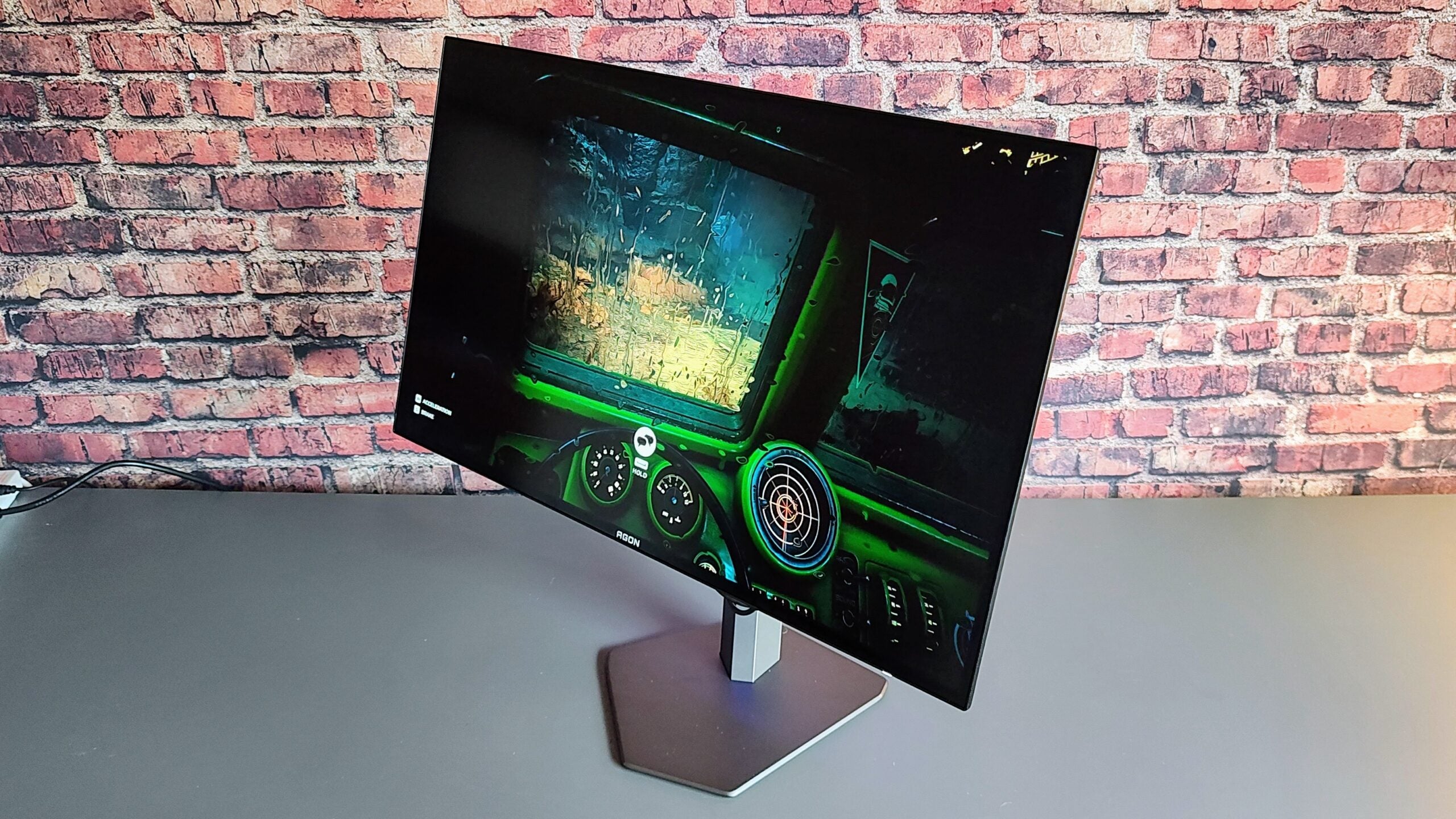Das Keyboard MacTigr Review
This won't replace your Apple Magic Keyboard.
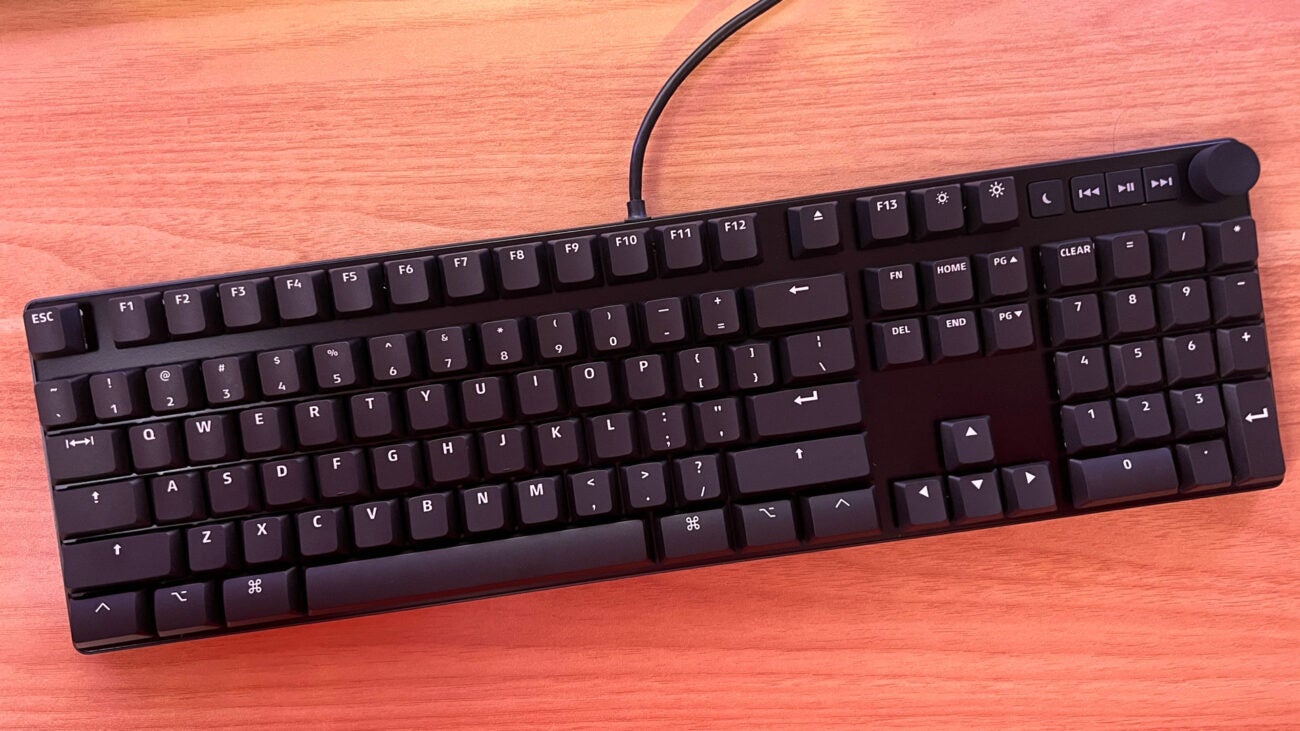
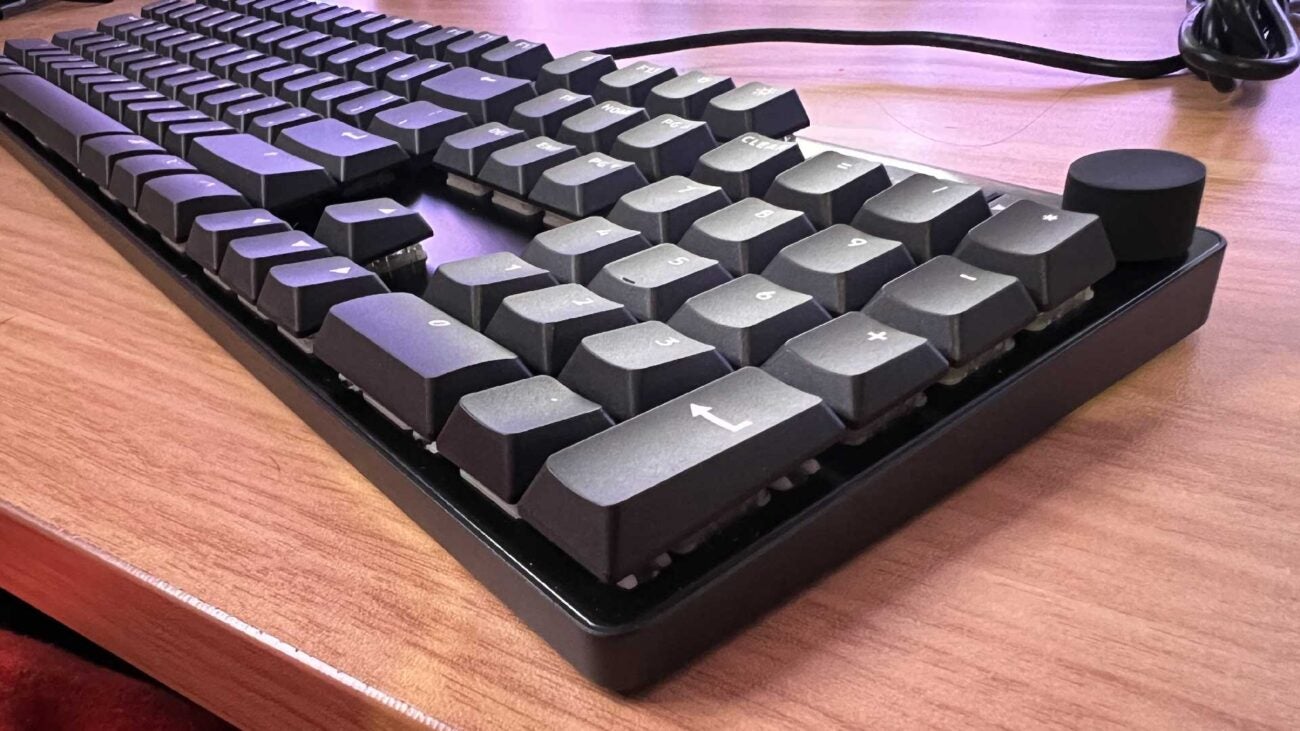
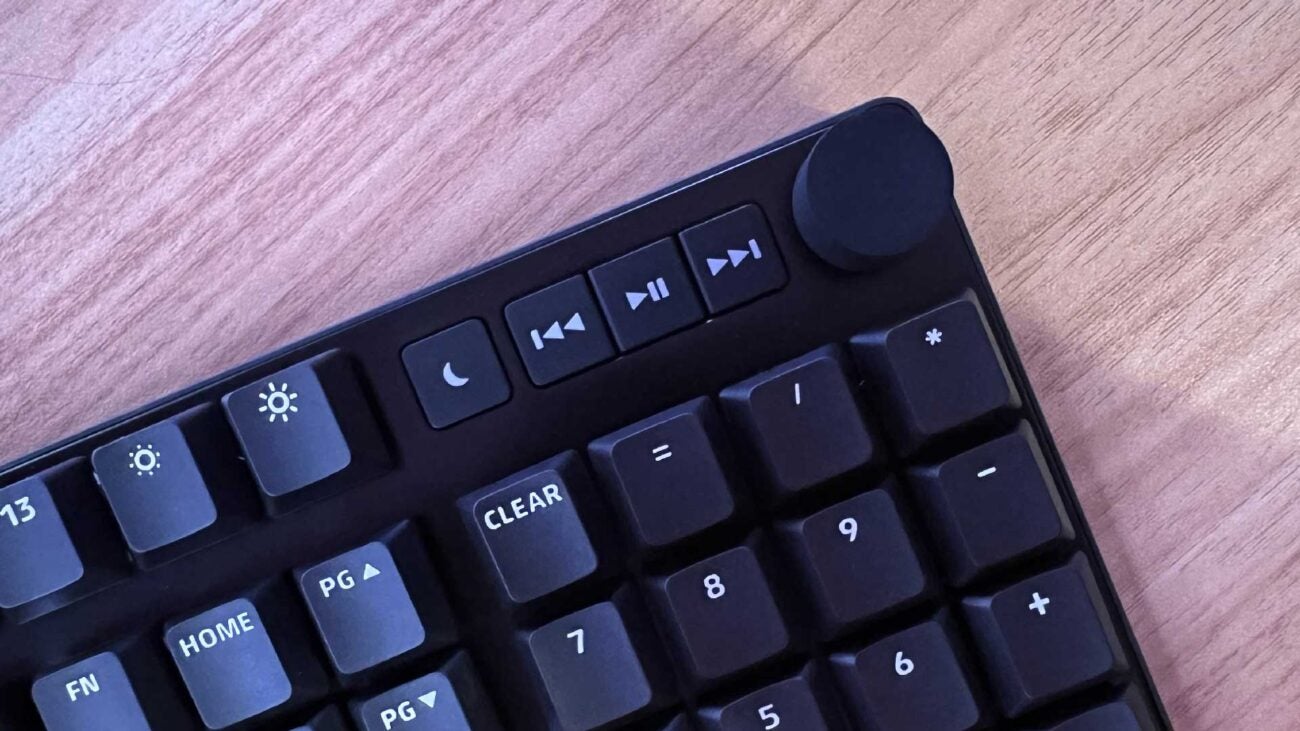
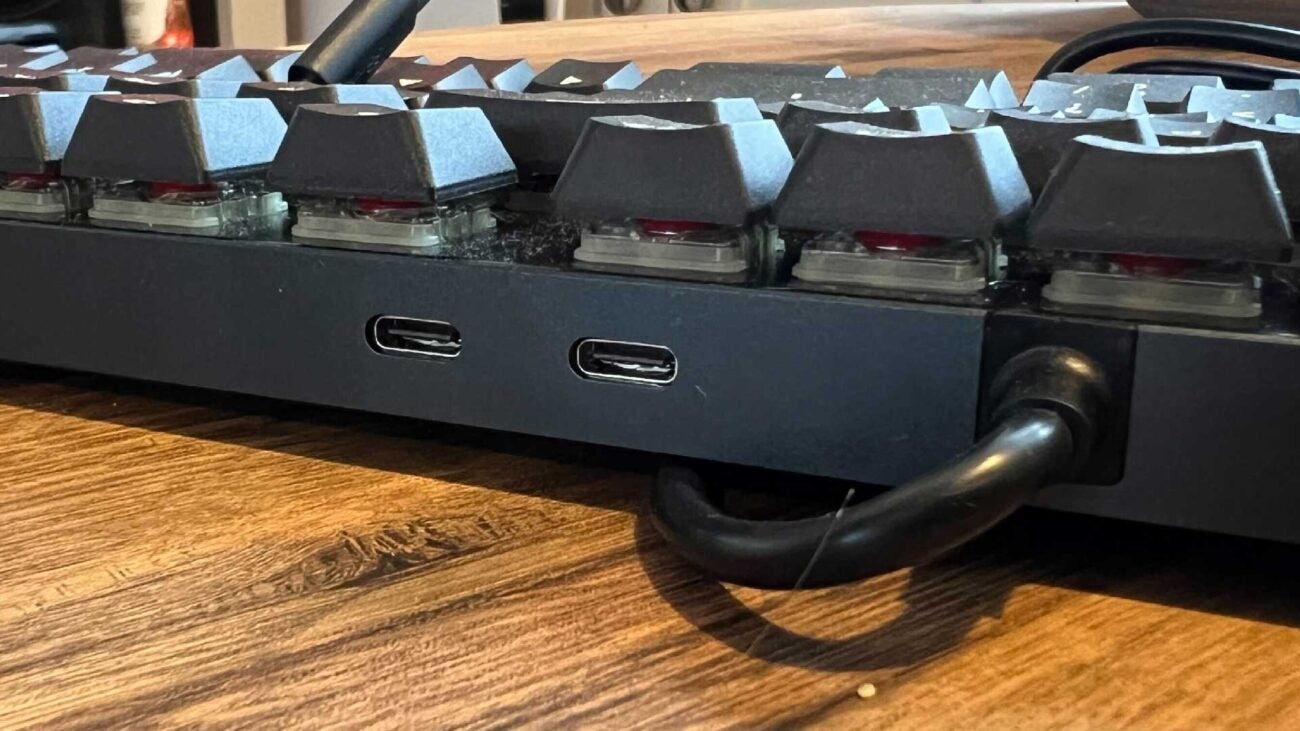
Verdict
Designed to feel as familiar as the reference Apple Mac keyboard, the Das Keyboard MacTigr does stick to its guns, but maybe in too many ways to seem worth the asking price. Apple users are already used to paying a premium, and while this one certainly feels great, it also feels just a little bit barebones and borderline unnecessary.
Pros
- Sturdy metal chassis
- Cherry MX Low Profile Red mechanical switches
- Tactile media wheel and USB-C hub
Cons
- No height adjustment
- No backlight
- Scratchy feel to each key press
Key Features
- Reference designThe Das Keyboard MacTigr uses a reference design mimicking Apple’s own to make transitioning over a breeze.
- Low-profile Cherry MX Red mechanical switchesLow-profile mechanical switches offer a tactile typing experience, a familiar feel to the Apple Magic Keyboard, and can survive 100 million presses.
- USB-C hubA handy 2-port USB-C hub can be used to connect additional peripherals, chargers, or data transfer devices.
Introduction
Designed as a reference clacker, the Das Keyboard MacTigr uses the design principles of the original Apple A1048 or the more recent Apple Magic Wireless Keyboard – one I’ve had a particular fondness for decades. But in following it too closely, does this expensive mechanical keyboard try too little to feel worth it?
An all-metal design is a striking design decision that puts this particular board way ahead of the direct competition when it comes to durability, that’s for sure. And its thin profile certainly keeps it looking smart on the desk in place of the aforementioned reference board. It just feels like there should be a little more on offer.
Media controls are present, as they are in most of the Das Keyboard range, giving you ways to fidget through your playlists without reaching for your mouse or flicking between apps. That’s always appreciated, and the dial feels great. There’s just a feeling that the price of this board is weighted a little too heavily on its metal construction, with it omitting the modern comforts of other boards that we feel even Apple’s original would benefit from in a modern iteration.
Design
- Reference design
- All-metal construction
- Low-profile mechanical switches
The Das Keyboard MacTigr features an entirely metal construction. Though the keys are typical double-shot ABS that’ll certainly stand the test of time, everything thereafter is a mix of metals. The darkened stainless steel top shakes off fingerprints with no problem, and the aluminium unibody makes the whole package feel unbreakable.

Unlike some other Das keyboard offerings, the shape of this one is clean, sleek, and uniform. The long rectangular body with slim rounded corners will look positively tiny on the desk. It’s a full-sized board, so your mouse will have to be off to one side a bit, but it’s a small price to pay for a complete collection of keys if that’s what you’ve gotten used to by now.
The profile of the board is never going to rival the wireless Apple Magic keyboard and its tiny scissor switches, but it’s still flat enough to stow into a tall bag. That’s great if you move between machines a lot and just can’t live without it. And while the keycaps can be removed, it takes quite a bit more effort than taller ones on the market, so you shouldn’t run into too much risk of losing a few in your bag if you have to sprint for the train.
You will notice the board lifts slightly toward the back end to give that curved ergonomic angle, but that’s about the end of its ergonomic endeavours. It doesn’t follow in the footsteps of the Das Keyboard 6 Professional – there are no adjustable feet to flick out or screw on here. That’s another downside of sticking to that reference design philosophy.

What does carry over from other Das products are the media controls and dedicated Sleep button in the top-right, and the two-port USB-C 3.0 hub, which should be easy to make the most of thanks to the average Mac’s array of full-spec Thunderbolt ports. At the very least, they’ll make charging your Apple Magic Mouse a little less of a comical chore.
Performance
- Smooth switches and ergonomic key shapes
- Plug-and-play operation
- Doesn’t work seamlessly on non-MacOS Apple devices
Being a full-sized board, there’s little the Das Keyboard MacTigr can’t do for you. If something worked on your Mac’s included keyboard, it’ll work on this one. What you’re doing is swapping out scissors or rubber dome switches for Cherry Low Profile MX Reds. These linear switches will take a tad more force to press down, but not nearly enough to mean adjusting how you move your fingers.
What you should feel is a more premium and sturdy force as the key travels down and bounces back up. Being low-profile, these will feel immediately different to the taller keys found in something like the Corsair K70, instead feeling more akin to the dampened and lubricated K70 Core. If you haven’t tried either of those boards in the past, just know that this approach feels solid and mature whereas others can feel cheaper and juvenile.
The double-shot keycaps of the Das Keyboard MacTigr should be able to stand up well against the test of time, too. The legend is already clearly legible, but it’s this extra process that should help ensure they stay that way, with no real chance of the letters fading over prolonged use.
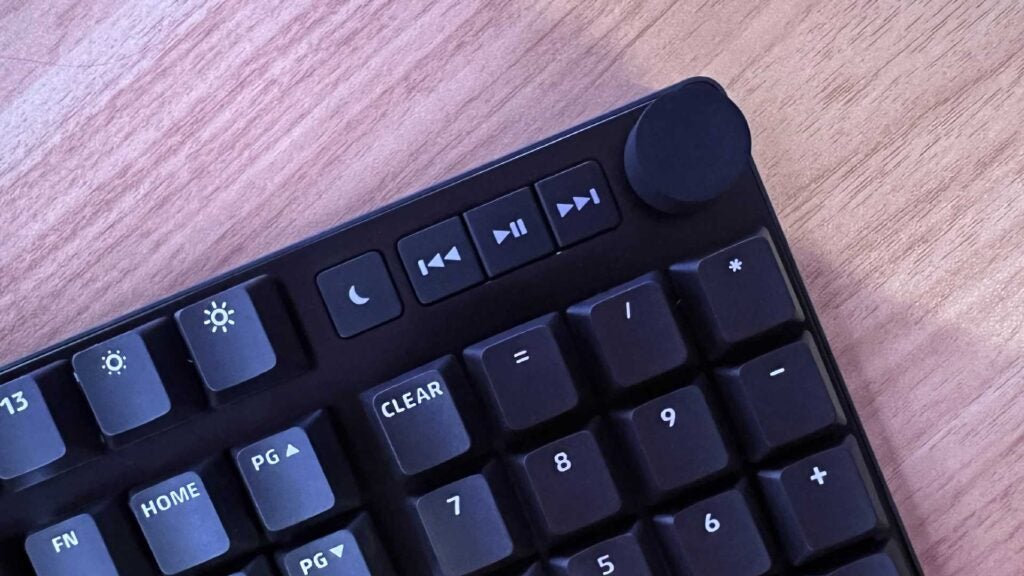
Continuing with the keycaps, you’ll notice all sorts of shapes and indentations with these. The bottom row is largely domed to help you slide on and off at speed given its infrequent use, with the rest of the keys being lightly concaved to welcome your fingertips.
The F-key row at the top lacks the segmented spacing, and you’ll lose quite a few compared to the Magic Keyboard with Touch ID (including said biometric system), but what you’ll get in its place are those aforementioned media controls.
The controls in particular work as well as you’d expect. The four buttons are quite loud and have that snappy, no-travel feel to them. It isn’t to my taste, but the volume wheel clicking softly with each tiny incremental stage is. The dial is smaller and doesn’t bleed over the edge like the Das Keyboard 6 Professional, nor can you click it to mute, but it does feel better in use.
Using it to write this review on my iPad, I am a little disappointed that you lost some functionality. For example, Apple’s keyboard allows the FN key to allow for app switching on an iPad. On here, it does not. The legend doesn’t match up to Apple’s iPad-specific Magic Keyboard, and some of the universal keys you’d think would work just fine on an iPad don’t, which may irk those who like to use both.
Software and Lighting
- No software required or offered
- No backlight
- Can be customized through global settings
The Das Keyboard, for some maddening reason, omits backlighting entirely. If you’re planning to use this for late-night coding efforts, you’d better get a lamp ready or use those brightness keys to crank up your display.
It’s a major mark on an otherwise solid keyboard and one that might confuse folks when they see a large legend perfectly suited to it, the two brightness buttons, and the high price tag.
And, being a reference keyboard, software support is entirely dependent on the machine you use it on. Interestingly, my iPad’s keyboard screen suggests there are two Day Keyboard MacTigr devices plugged in at once, with each having different modifier keys I can change the purpose of.
The second one suggests the Globe key (which is still the FN key on this particular board) is present and set to work as it would on a modern Mac/iPadOS machine, but there doesn’t appear to be a way to trigger it. The brightness controls won’t even work to turn down your iPad display.
Latest deals
Should you buy it?
You want a keyboard that could last a lifetime
The Das Keyboard MacTigr offers a solid native typing experience for MacOS. It’s pricey, but there’s also no reason it won’t last for generations.
You rely on key backlighting, adjustment and a modern legend
At this price point, it’s a surprise to see the Das Keyboard MacTigr omit things like key backlighting, height adjustment, and a legend that matches today’s Mac lineup. If you travel, the Magic Keyboard with TouchID probably still makes more sense at this price.
Final Thoughts
The Das Keyboard MacTigr feels like a product that’s stuck in the past. It offers a solid typing experience for if you’re moving from a compact butterfly or scissor switch setup, but the omission of modern comforts like backlighting, TouchID, and the Globe key means it’s in dire need of a refresh.
Despite the USB-C standard suggesting it’s built for more modern Apple devices, it struggles to make the most of them, offering a very basic experience on an iPad, which might negate the idea of taking it with you to get lots of work done with a relatively compact setup.
If it looks to have everything you need, however, there’s little reason to believe it won’t help you get the job done for years on end. It’s a solid workhorse that will help you put words to a page. It’s just that when it comes to much else, let’s just hope you get some good use out of the USB-C hub and media controls. Take a look at the best mechanical keyboards if that’s all you’re looking for, in which you’ll find excellent productivity-friendly mechanical options like the Logitech MX Mechanical and Keychron Q1 Pro, both at a similar or slightly cheaper price.
How we test
We use every keyboard we test for at least a week. During that time, we’ll check it for ease of use, comfort and performance of the switches.
We also check each keyboard’s software to see how easy it is to customise and set up.
Tested on a Mac Mini and iPad Pro.
Compared to numerous other keyboards.
FAQs
USB-C means the Das Keyboard MacTigr will be recognized by a compatible iPad, but not every keyboard function will work.
No, there’s no LED lighting to speak of here.




